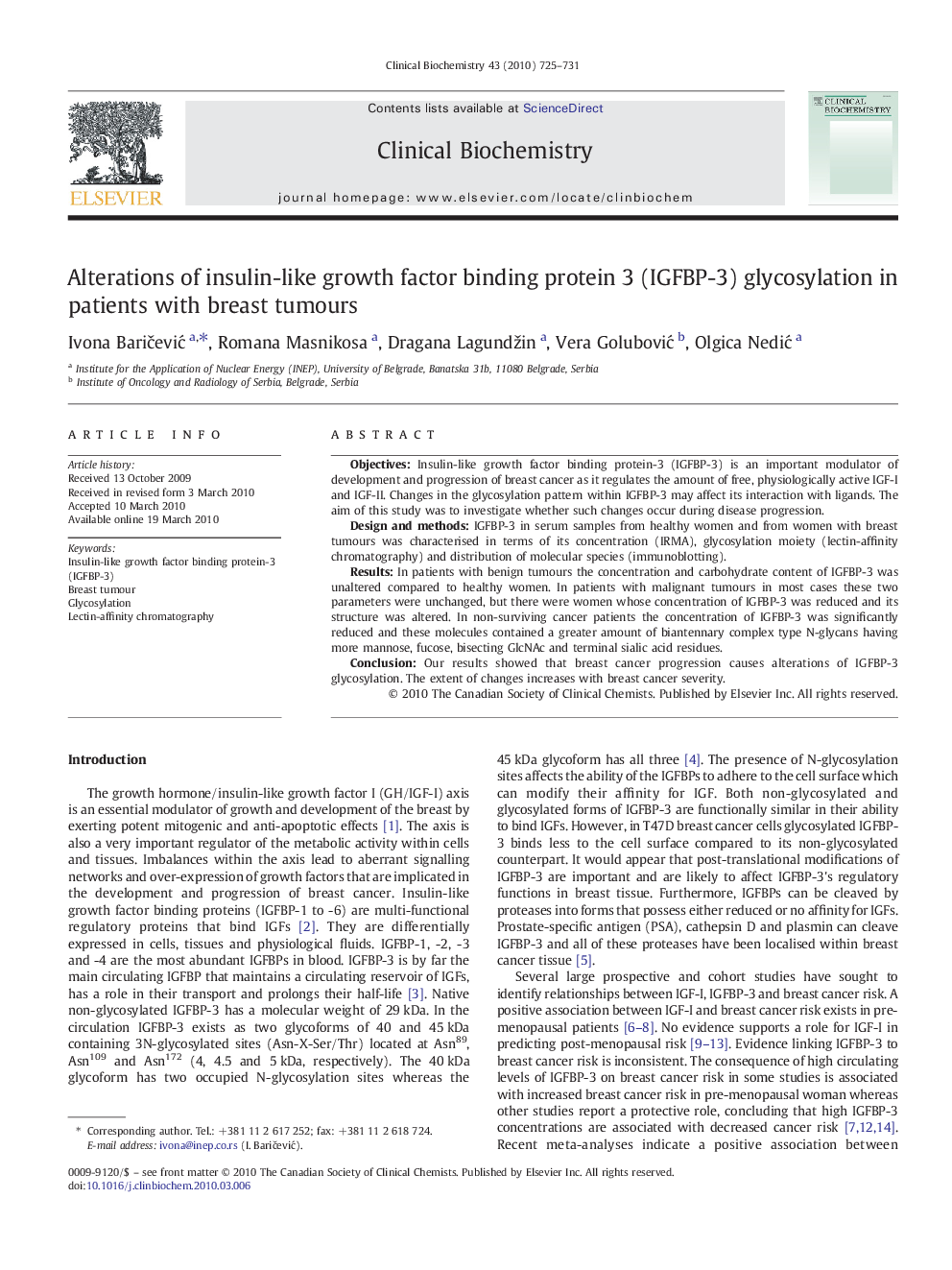| کد مقاله | کد نشریه | سال انتشار | مقاله انگلیسی | نسخه تمام متن |
|---|---|---|---|---|
| 1970394 | 1059804 | 2010 | 7 صفحه PDF | دانلود رایگان |

ObjectivesInsulin-like growth factor binding protein-3 (IGFBP-3) is an important modulator of development and progression of breast cancer as it regulates the amount of free, physiologically active IGF-I and IGF-II. Changes in the glycosylation pattern within IGFBP-3 may affect its interaction with ligands. The aim of this study was to investigate whether such changes occur during disease progression.Design and methodsIGFBP-3 in serum samples from healthy women and from women with breast tumours was characterised in terms of its concentration (IRMA), glycosylation moiety (lectin-affinity chromatography) and distribution of molecular species (immunoblotting).ResultsIn patients with benign tumours the concentration and carbohydrate content of IGFBP-3 was unaltered compared to healthy women. In patients with malignant tumours in most cases these two parameters were unchanged, but there were women whose concentration of IGFBP-3 was reduced and its structure was altered. In non-surviving cancer patients the concentration of IGFBP-3 was significantly reduced and these molecules contained a greater amount of biantennary complex type N-glycans having more mannose, fucose, bisecting GlcNAc and terminal sialic acid residues.ConclusionOur results showed that breast cancer progression causes alterations of IGFBP-3 glycosylation. The extent of changes increases with breast cancer severity.
Journal: Clinical Biochemistry - Volume 43, Issue 9, June 2010, Pages 725–731